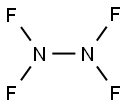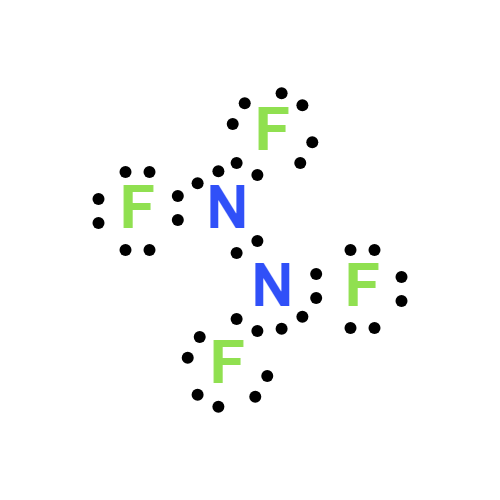General Description
A colorless toxic irritant gas. Nonflammable. Prolonged exposure of the container to high heat may cause Dinitrogen tetrafluoride to rupture violently and rocket. Used in organic synthesis and as an oxidizing agent in fuel for rockets.
Reactivity Profile
Dinitrogen tetrafluoride is an oxidizing agent. Explodes or ignites on contact with reducing agents at normal temperatures, including alcohols, amines, ammonia, beryllium alkyls, boranes, dicyanogen, hydrazines, hydrocarbons, hydrogen, nitroalkanes, powdered metals, silanes, or thiols [Bretherick 1979 p.174]. Can explode at high temperatures. Can explode with shock or blast when under pressure. Emits highly toxic fumes of fluorine and oxides of nitrogen when heated to decomposition. Several grams of a crude mixture containing Dinitrogen tetrafluoride and nitrogen trifluoride had been allowed to collect in a stainless steel cylinder. During opening of valves to check the pressure, the cylinder exploded, killing one man and injuring another [MCA Case History 683 1966].
Health Hazard
TOXIC; may be fatal if inhaled or absorbed through skin. Vapors may be irritating. Contact with gas or liquefied gas may cause burns, severe injury and/or frostbite. Fire will produce irritating, corrosive and/or toxic gases. Runoff from fire control may cause pollution.
Fire Hazard
Some may burn but none ignite readily. Vapors from liquefied gas are initially heavier than air and spread along ground. Cylinders exposed to fire may vent and release toxic and/or corrosive gas through pressure relief devices. Containers may explode when heated. Ruptured cylinders may rocket.
Safety Profile
A poison. An unstable explosive gas sensitive to light, heat, or contact with air or steel. At high pressures it can explode due to shock or blast. Flammable when exposed to heat or flame. Potentially explosive reaction with hydrocarbons; hydrogen; organic materials; reducing agents; oxygen. Forms explosive mixtures with alkenyl nitrates; nitrogen trifluoride. When heated to decomposition it emits highly toxic fumes of Fand NOx. See also FLUORIDES, HYDROFLUORIC ACID, and HYDRAZINE.

